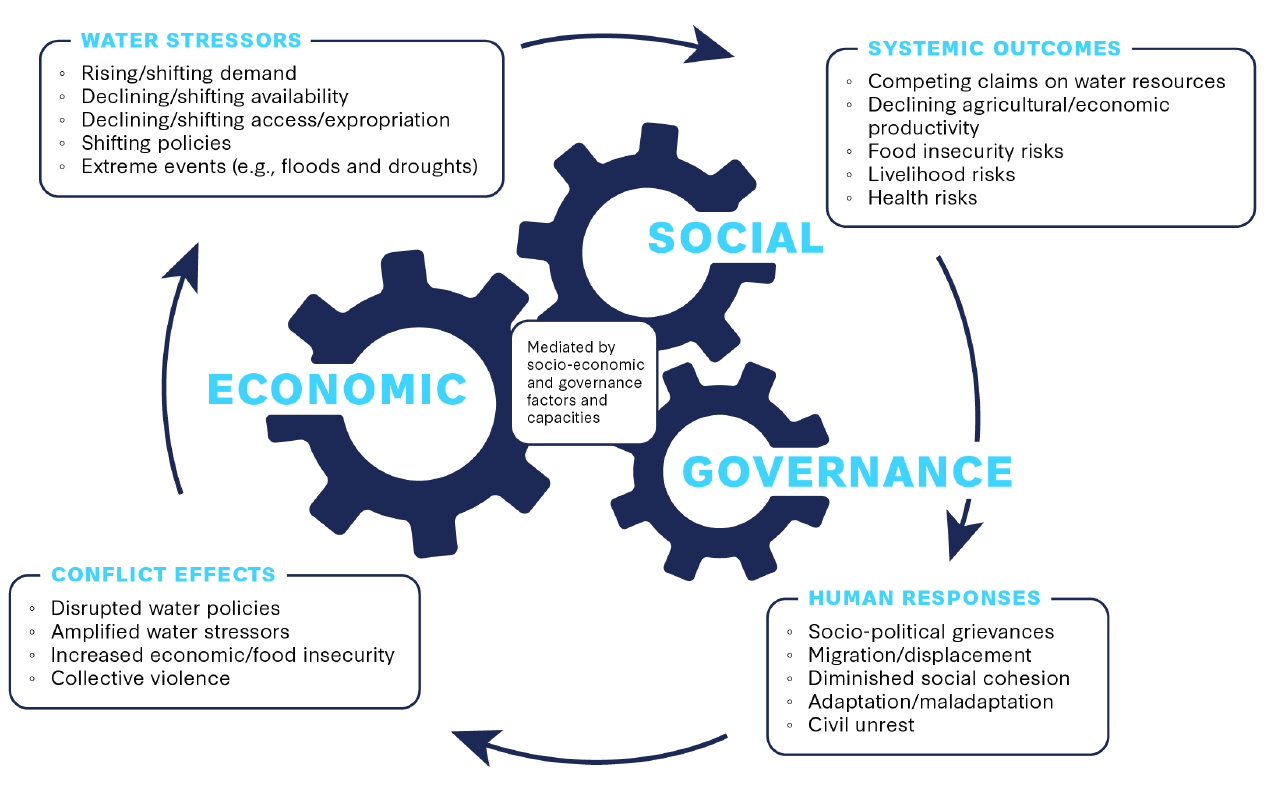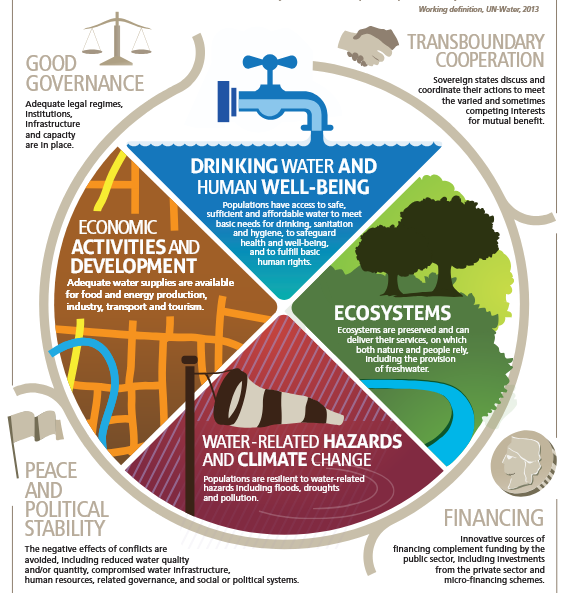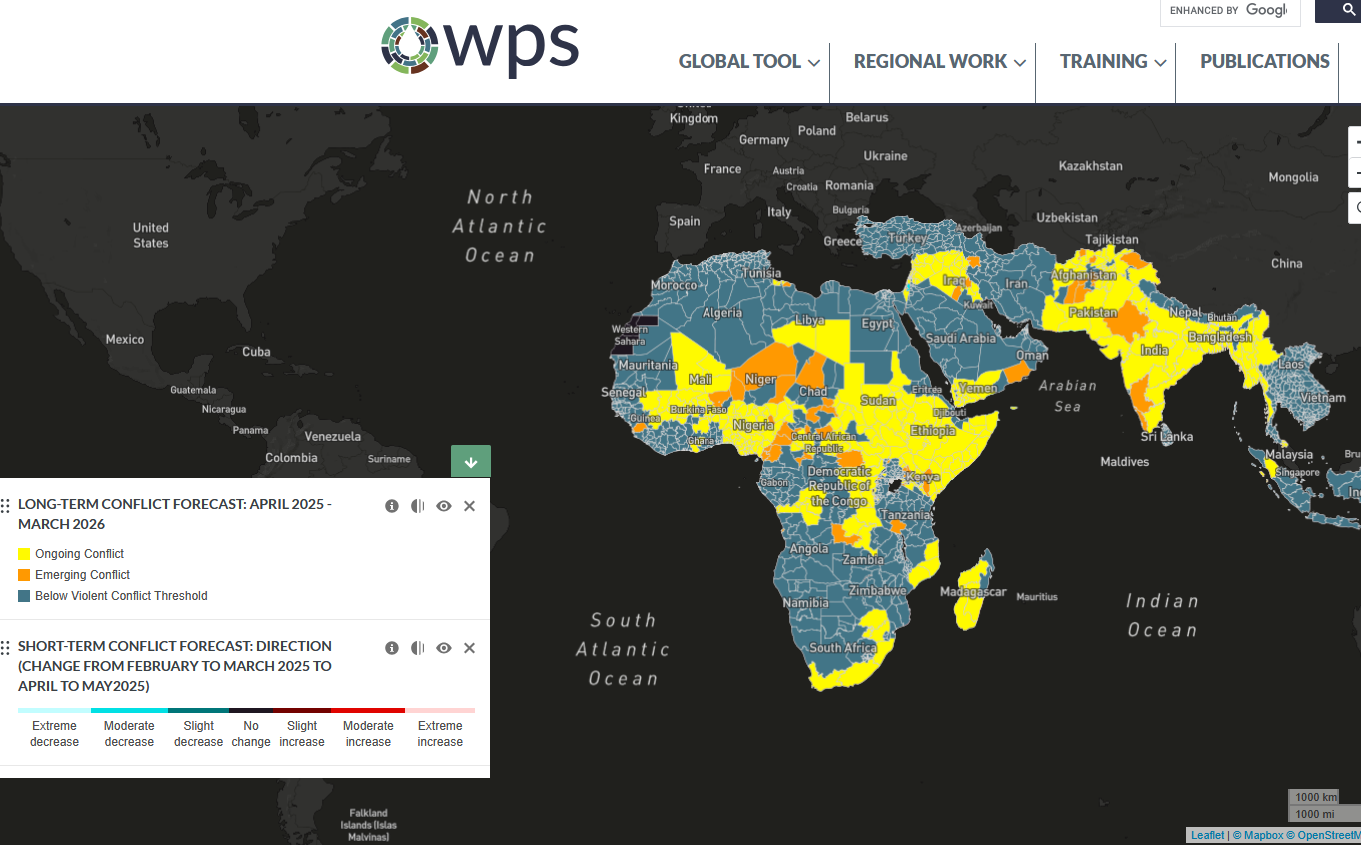Listen here on Spotify | Listen here on Apple Podcast
Episode released on June 12, 2025
Episode recorded on February 26, 2025

David Michel discusses rising global water conflicts, with examples in Ukraine, Gaza, Myanmar, the Middle East, and Sahel regions.
David Michel is a Senior Fellow at the Global Food and Water Security Program within the Center for Strategic and International Studies (CSIS). Today we are going to discuss CSIS, the Hidden Depths podcast, and conflicts in different regions (Ukraine, the Middle East, Sub-Saharan Africa)
Highlights | Transcript
David recently released a podcast miniseries: Hidden Depths, that examines the dynamics of water conflict and possibilities for water cooperation.
The Center for Strategic and International Studies (CSIS) was founded in 1962 as a nonpartisan, nonprofit policy research organization to advance ideas to address the world's greatest international and foreign policy challenges. CSIS has over 250 full-time staff and is funded equally from the US and other governments, corporate grants, and foundations. CSIS is based in Washington DC. There are four major departments:
- Defense and Security
- Economic Security and Technology
- Global Development (includes Global Food and Water Security Program)
- Geopolitics and Foreign Policy
The Global Food and Water Security Program has projects with UN agencies, such as Food and Agricultural Organization (FAO), the private sector, foundations, and individual countries (e.g., Denmark).
Hidden Depths Podcast Episodes:
- Water as a Weapon and Victim of Conflict
- Water Conflict and Cooperation
- New Forms of Water Conflict
- Water as a Driver of Conflict
- Water Diplomacy and Peacebuilding
- Protecting Water in Conflict
The UN defines water security as “The capacity of a population to safeguard sustainable access to adequate quantities of acceptable quality water for sustaining livelihoods, human well-being, and socio-economic development….” (Fig. 1).
CSIS: water conflicts: armed conflict or physical violence deaths, or injuries, or significant material damage that's related to water systems, or water resources.
Water conflicts are rising: Pacific Institute: Water Conflict Chronology:
- Conflicts during 2012 to 2021 four times more conflicts during 2000 to 2011.
- Conflicts in 2022 were double the number of incidents in 2021.;
- Violent incidents in 2023 were 50% higher than in 2022.
Water conflicts are generally categorized by the Pacific Institute as:
- Water as a trigger of conflict (water resources or access being the root cause);
- Water systems as casualties of conflict (water systems collateral damage); and
- Water as a weapon of conflict (water resources being used as a tool in warfare).
Water conflict dynamics reflect interactions among social, economic, and governance drivers (Fig. 1).
Examples of conflicts in different regions globally include:
Demonstrations in Western France where people are protesting irrigation schemes and reservoir building that they believe supports agroindustry and not local farmers.
Clashes as Thousands Protest French Agro-industry Water 'Grab' (VOIA, Oct 29, 2022)
“Opponents claim the "mega-basins" are wrongly reserved for large export-oriented grain farms and deprive the community of access to essential resources.”
French police clash with protesters opposed to reservoir plans (Reuters, Mar 25, 2023).
Mexico: Farmers seized control of a dam in the Rio Grande system, protesting water deliveries to the US under treaty obligations.
‘This Is a War’: Cross-Border Fight Over Water Erupts in Mexico:
Mexican farmers seized a dam to stop water payments to the US, in a sign of growing conflict over increasingly scarce resources (NYT, Oct 14, 2020).
Sahel, Africa: conflicts between farmers and herders over access to water points.
Farmer-herder tensions ignite across Africa (Feb 17, 2025)
Supporting Water Programming in the Sahel (CSIS, Sep. 27, 2022)
Ukraine war: Water as a casualty and weapon of conflict.
Destruction of Kakhovka Dam on the Dnipro River by the Russians, 20 km3 of water capacity,
- Loss of drinking water for 800,000 – 1 million people
- Flooding of ~ 620 km2, destruction of 30 different irrigation schemes
- Loss of hydropower (350 MW capacity)
- Wetlands reestablished in the reservoir
- Minefields swept downstream, unexploded ordinances
- Impacts on food security reliant on imports from Ukraine
Global food price crisis in 2007-2008:
- Use of maize for biofuels (US, EU)
- Droughts in major exporting countries, such as Russia, Ukraine, Canada, Australia, Argentina
- Historically low global grain reserves
- Hoarding mentality
- Political disorder, bread riots in dozens of countries (overthrow of Government in Haiti)
- Exporter nations introducing barriers to exports (political decisions amplifying impacts)
Myanmar (formerly Burma)
- Plenty of water, only using ~3% of its available renewable water supplies for all sectors (hydropower, agriculture, industrial, and municipal needs)
- Myanmar Government wanting to make the country a battery for SE Asia using hydropower
- Only half of Myanmar population has access to electricity (30 million people)
- Hydropower potential is in N and W populated by ethnic minorities
- Myanmar Government developing contracts with China for hydropower
- Clashes with ethnic minorities, ceasefire ended and outbreak of civil war
Ethiopia building the Grand Ethiopian Renaissance Dam (GERD) to generate electricity
- Egypt 90 – 95% of irrigation depends on the Nile, concerned that Ethiopia might divert water for irrigation or withhold water for its own use during drought periods
- Sudan in between Ethiopia and Egypt hopes to expand its irrigated agriculture
- Questions about GERD management to address droughts and hydropower
Data are important for assessing conflict situations.
- World Resources Institute (Charlie Iceland) built a Water Peace and Security early warning tool (Fig. 3).
- Projects water conflicts from a few months to a year
- Considers weather patterns, water demand, food security
- Warning system correctly predicts about 86% of water conflicts when tested with historic data but has about 80% false positives also (i.e., predicts conflict that does not happen)
- Expanding on Aqueduct platform
- WRI tool ongoing conflict and emerging conflict
- Overlap with their drought map and other drivers
Water security issues in the US related to cybersecurity
- Lot of water systems in the US (4,500 systems in Texas alone)
- Decentralization may result in increased resilience, but small systems don’t have technical expertise to address cyber security issues






